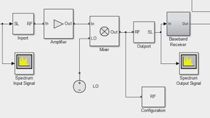How Cloud-Based Virtual Vehicles Can Help You Build Your Next-Gen Software
Sameer Muckatira, MathWorks
Can you optimize new software algorithms without on-vehicle testing time? How much can we minimize the need for HIL benches and vehicle tests to release new software components? With the rapid rise in the number of software components, introduction of complex E/E architectures, and deployment using over-the-air updates, the future of automotive innovation will be highly software-defined. This future of evergreen software releases demands processes that can decouple software from hardware to ensure we are not constrained by the need for vehicle time and HIL bench tests during development. Virtual vehicle simulations play a key part in helping us "shift-left" away from such hardware dependencies; and when deploying effectively on the cloud, can help you scale up your analysis and testing very quickly. In this talk, see how cloud-based simulations can help you build a new "sport plus" mode for your EV, with faster 0 to 60 mph (100 kph) times. Increasing the power consumption will have effects on the thermal system, and on the EV range—both of which need to be quantified. Using a virtual vehicle model, see how to:
- Quickly change parameters (such as battery current discharge) and quantify the effects of these changes at the component and system level (battery temperature, EV range)
- Scale up your simulation runs by deploying Simulink® on the cloud
- Combine your fleet data together with virtual models to gain insights such as expected EV range change
- Extract vehicle and environment data to test your production intent software stacks on virtual ECUs and HIL benches
- Combine virtual vehicles with virtual ECU emulators (the future of virtual validation)
Published: 15 May 2024




